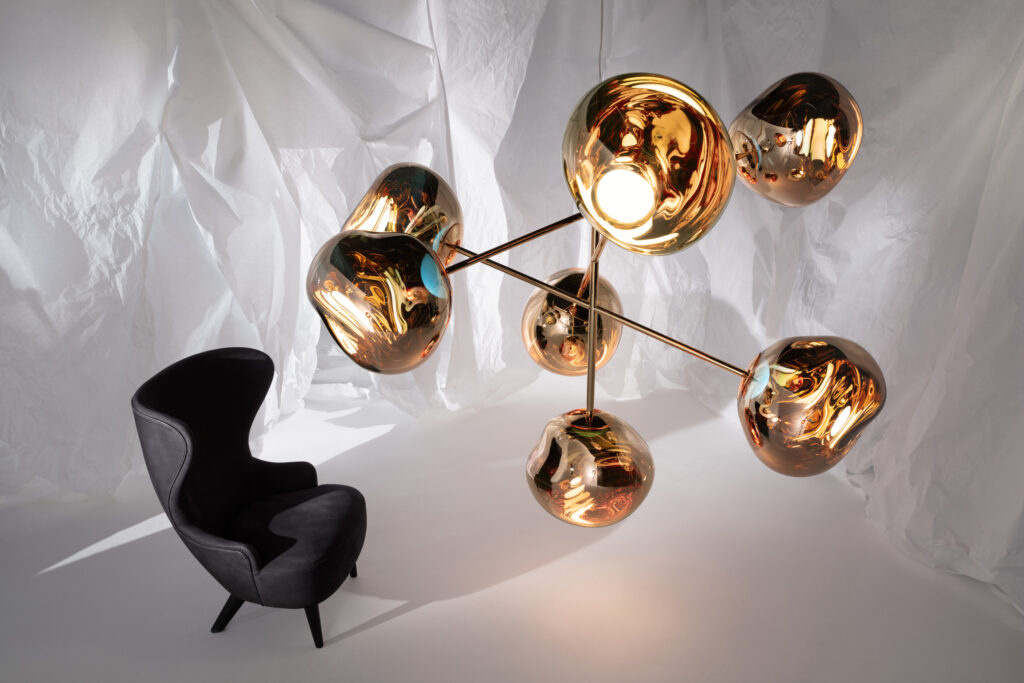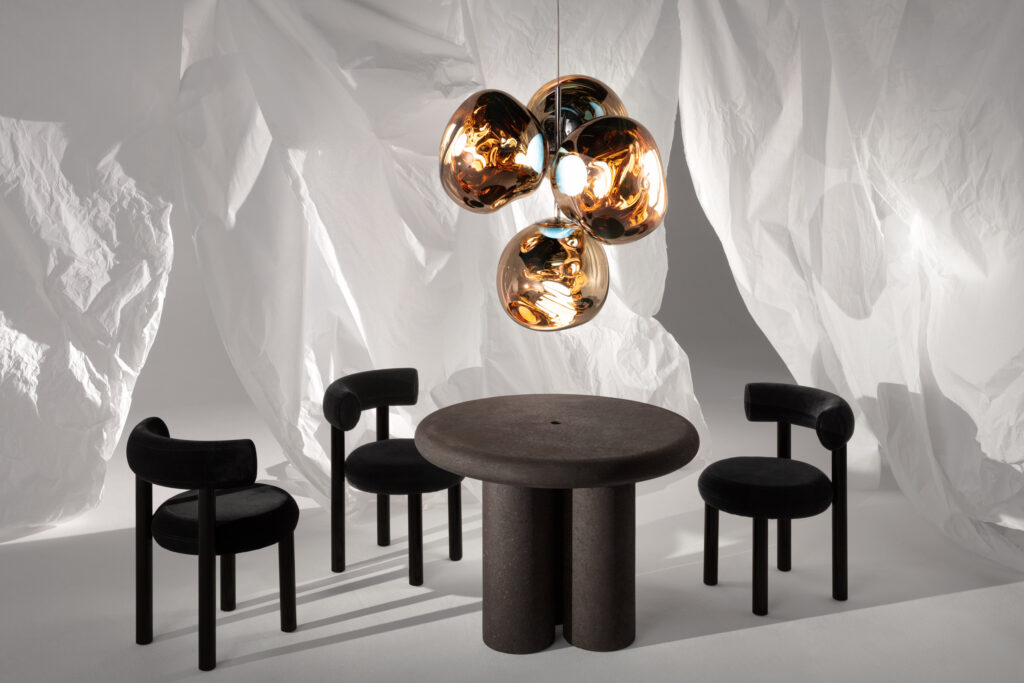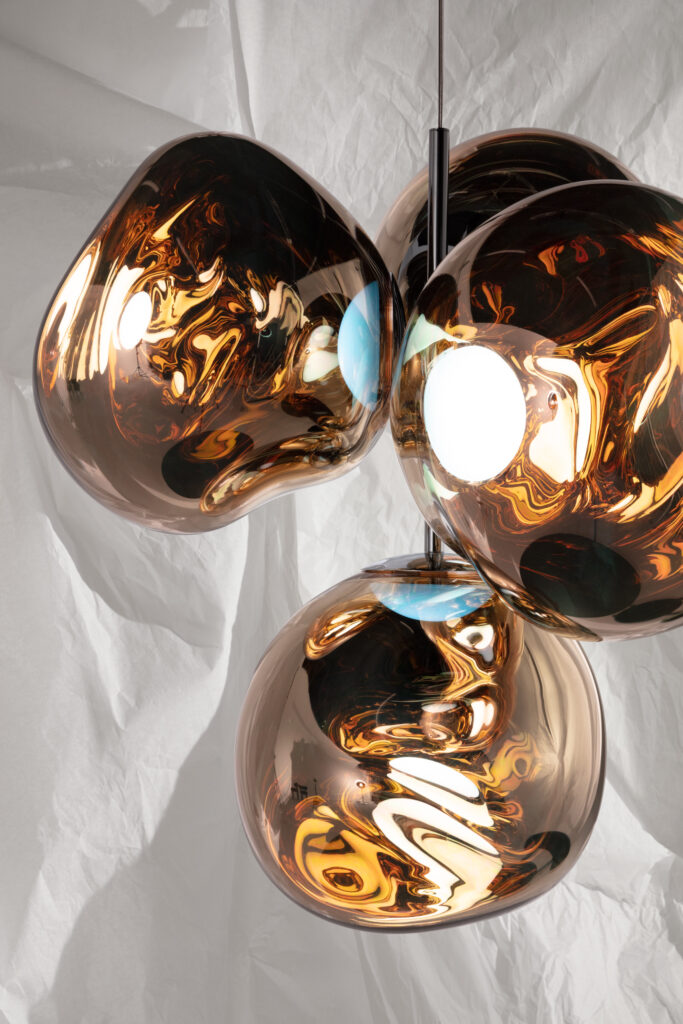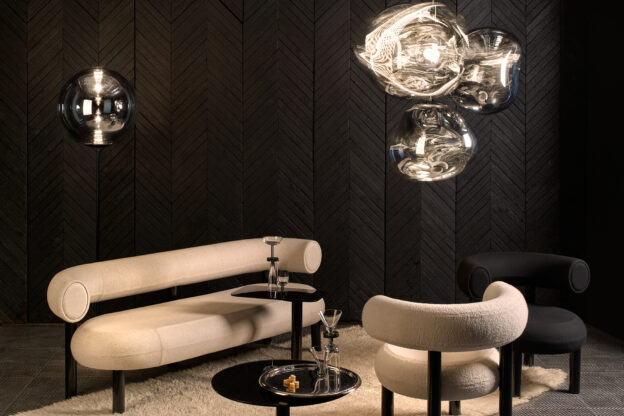Tom says, ‘We’ve all seen dichroic effects – maybe on cheap novelty sunglasses in Camden Market or on the surface of early roman glass in the British Museum, but I know that it’s a finish that has always fascinated me.
The emergence of Modern Dichroic thin film filters, which split white light into its component colours is the work of the engine of extreme innovation, NASA. So, when we looked at updating MELT – our most successful light, rather than offering a new shape, a new size, or a new colour, we decided to instead filter the light with a dichroic filter.’
Tom Dixon

The Melt lights are created through a process of blow-moulding and vacuum metallisation to achieve melted orbs with abundant and unusual luminosity. Using injection blow-moulding, a melted plastic polymer-moulding is injected into a massive precision-made steel tool, inflated with compressed air and then cooled. The mirror finish of each pendant is then created by the highly technical process of vacuum metallisation.
Maybe the unexpected combination of soft organic shapes with high-tech metal vapour deposition is one of the reasons that the Melt lamp has become such a hit product. Or possibly the complex and ever-changing internal reflections that are created by light bouncing around the uneven internal surfaces. Whatever the attraction is, we wanted to try a few new ways of supporting the lamp – to allow Melt to thrive in alternative environments.

So, here we see Melt masquerading as a meteorite explosion, with 12 lamps radiating from a central core. Or, for those who do not have a giant lobby or a 5-metre ceiling, a more reductive approach with Melt balanced on a perfect cone base – in floor lamp, table lamp and bedside lamp versions, in almost perfect small, medium and large variations.




